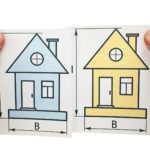By: Daniel Bortz
Buying a home is exciting and terrifying. After all, this is the biggest financial move most people ever make. As such, there’s a lot of room for error, and even tiny mistakes can translate to tens of thousands of dollars.
The lesson here: Even the most intrepid home buyer should get some guidance not only on what to do, but also what not to do. Look no further than this list, which highlights the most common mistakes buyers make so you can avoid the same fate.
- Don’t shop for homes without an agent
By all means, start out by looking online at pictures of pretty houses—the more the better. It’s a vastly useful way to get the lay of the land. But when it comes time to get serious about buying a house, you should find a professional to help you out.
Think of a buyer’s agent as a fairy godparent who’s here to turn your homeownership dreams into reality. This person will guide you through every step of the home-buying process—from finding the right property and writing a winning offer to negotiating home inspection repairs and sailing through to closing.
“You want an advocate who is going to look out for your best interests in the transaction,” says Bellevue, WA, real estate agent Holly Gray.
2. Don’t meet with just one mortgage lender
Once you’ve found a real estate agent, your next step should be to get pre-approved for a home loan. To do that, you’ll have to meet with a mortgage lender and provide a good amount of paperwork, including two years of W-2 forms, two years of tax returns, and proof of funds for the down payment (among other documents).
That mountain of forms is one of the things that prompts many to meet with only one lender, says Richard Redmond, a vice president at ACM Investor Services in Larkspur and author of “Mortgages: The Insider’s Guide.” That’s a potentially big mistake!
Redmond recommends getting at least three quotes from different lenders so that you can survey your options and find the best loan for you. One option you have when shopping around is to meet with a mortgage broker—basically an intermediary who presents you with options from a variety of lenders. No matter what, “you need to feel comfortable with the lender you choose,” says Redmond. “You want a lender who asks probing questions, listens to your answers, and presents you with intelligent options.”
3. Don’t understate your budget
It might sound strange, but a number of home buyers make the mistake of hiding their true budget from their real estate agent.
“Some people are afraid that their agent is going to make them buy the most expensive house that they can afford, so they understate their price range,” says Daniel Gyomory, a real estate agent in Northville, MI.
However, if you’re not upfront with your agent about your price range, you might miss out on a great house.
“If you tell me your budget is $300,000 maximum but you’re actuallywilling to pay $400,000, I may not send you listings that could actually be a good fit for you,” Gyomory explains.
4. Don’t hold out for the ‘perfect’ house
People throw around the words “dream home” a lot. (Heck, we’re guilty of it.) However, here’s the not-so-harsh truth: “There’s no such thing as a perfect house,” says Gyomory. And that’s why he has clients create a list of “musts” and “wants” to identify their criteria and focus on what really matters to them.
5. Don’t make ridiculously lowball offers
You obviously want to get a bargain, but you could lose out on a home that you love by making an absurdly low offer. In fact, a recent survey from Inman found that 15% of real estate agents say the third-largest mistake people make when buying a home is offering too little for a property (that’s behind not talking to a lender first and waiting too long to make an offer).
“When you overlook market data and make a lowball offer, you’re pretty much slapping the seller in the face,” says Gyomory. And if you offend the seller, the person might not even be willing to make you a counteroffer.
Bottom line: Trust your agent to help you assess the value of a house and write a winning offer, says Karen Elmir, a luxury real estate agent in Miami.
6. Don’t forget to budget for closing costs
The home seller will chip in some money at settlement; however, as the home buyer, you have the (unfortunate) pleasure of shouldering the lion’s share of the closing costs. Your mortgage lender should be able to give you a rough estimate of your closing costs once a seller accepts your offer, but as a rule you can estimate that they typically total 2% to 7% of the home’s purchase price. So on a $250,000 home, your closing costs would amount to anywhere from $5,000 to $17,500.
7. Don’t make big purchases before you close
Once you have found the right house and get the seller to accept your offer, your loan still needs to go through underwriting in order for you to obtain the mortgage. One thing underwriters do is look at your credit score from the three major credit bureaus—Experian, Equifax, and TransUnion—to make sure your credit hasn’t changed since you were pre-approved.
Therefore, you’ll want to avoid taking on any new debt while you’re in the process of buying a house. Purchasing a car with an auto loan or maxing out your credit cards, for example, could hurt your credit score, which could potentially raise your loan’s interest rate or—in the worst case—get your mortgage application rejected. (In other words: Bye-bye, new house.)






